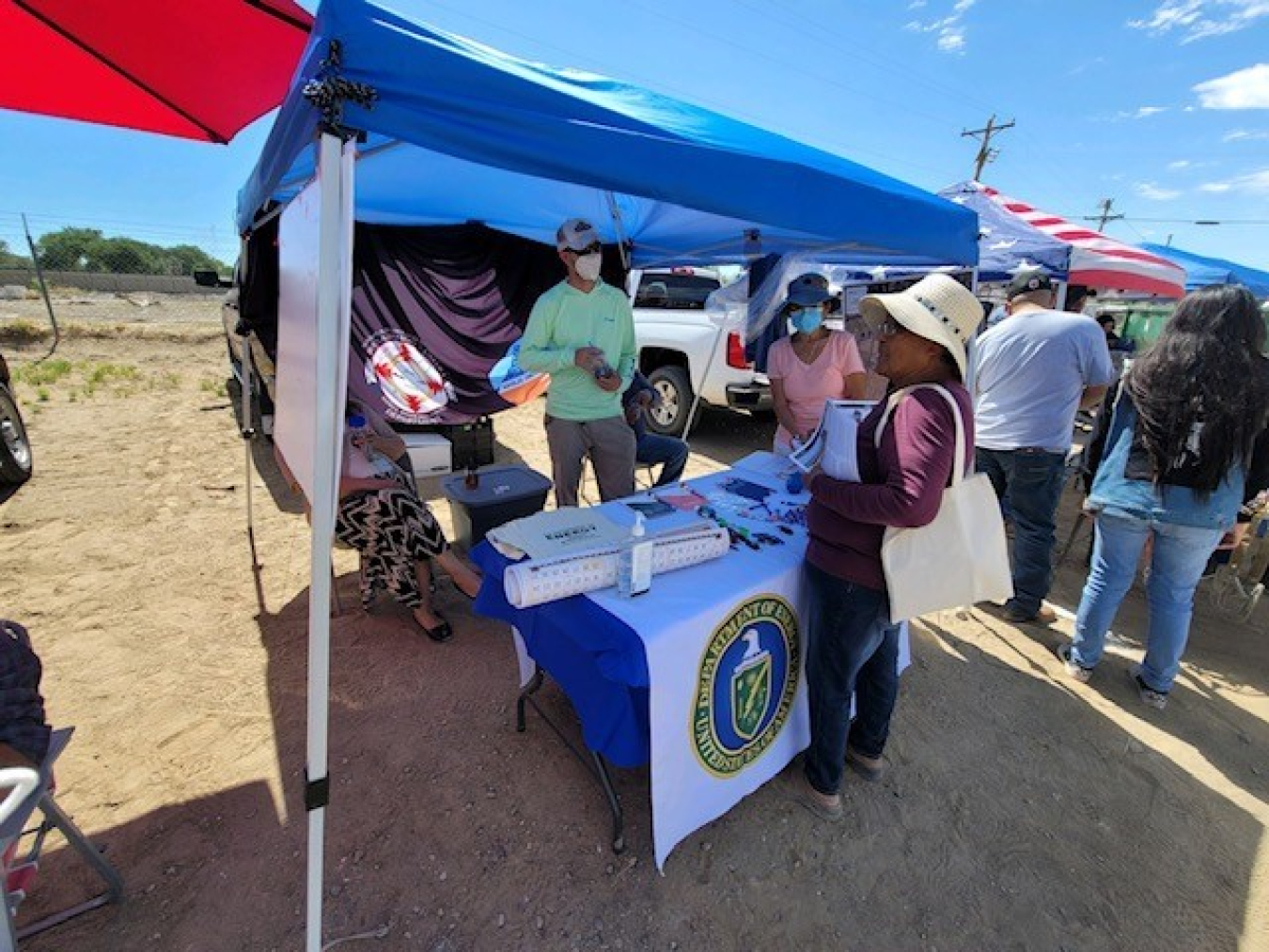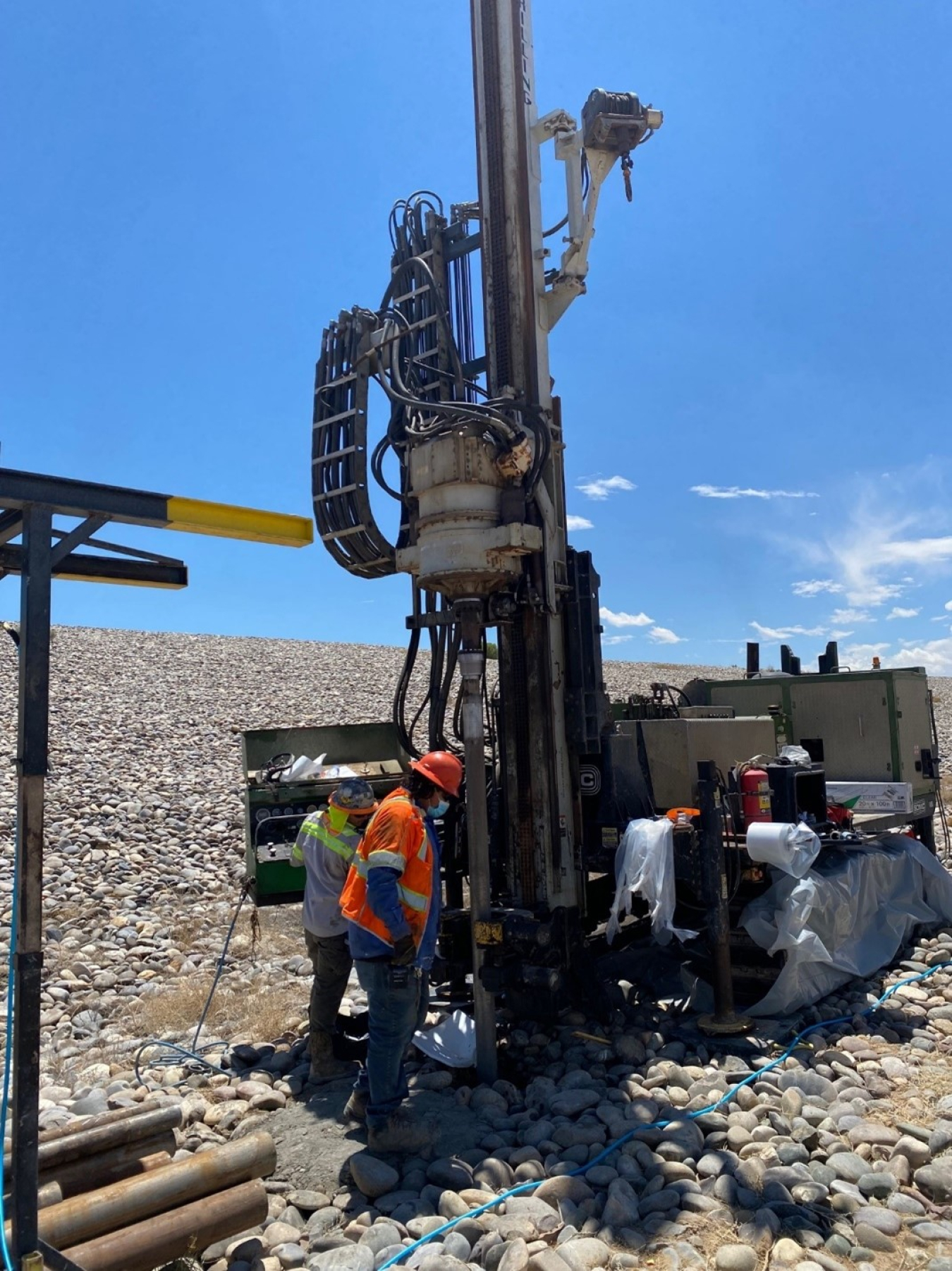Goal of project to further understand subsurface hydrogeology at site by collecting soil and groundwater data
August 11, 2022The U.S. Department of Energy (DOE) Office of Legacy Management (LM) has finished a drilling, data collection, and monitoring-well installation project at a former uranium-processing site in Shiprock, New Mexico.
The purpose of the project was to further understand subsurface hydrogeology and collect groundwater level, soil, and water chemistry data at the Shiprock Disposal Cell. The project was completed in July.
Information collected during the project will be used to update the Groundwater Compliance Action Plan (GCAP) for the site. The GCAP will be developed by DOE, with the participation of the Navajo Nation, and with the concurrence of the Nuclear Regulatory Commission, to describe the groundwater compliance strategy to be utilized at a former uranium mill site.

LM and LMSP staff conducted outreach events in Shiprock, New Mexico, during the drilling project at the Shiprock Disposal Cell in late July.
LM and its strategic partner (LMSP), and the Navajo Nation Abandoned Mine Lands Reclamation Department, performed extensive outreach within the community. That outreach began with presentations at the Shiprock Chapter House and was followed by packet mailings to stakeholders, door-to-door notifications, public-service announcements, paid advertising, and two public-affairs kiosks. Staff shared details from information sheets, distributed school supplies and bags, and answered questions about the disposal cell. Many local residents visited the kiosk.
LMSP Public Affairs Specialist Lillie Lane, who was born and raised in the Navajo Nation, recorded the radio ads for two stations that broadcast only in the Navajo language.
“Multi-faceted outreach with local leadership and community members is key to remaining transparent on the work LM performs at the Shiprock Disposal Site,” said Site Manager Mark Kautsky. “We have diligently worked to develop and maintain these relationships over many years.”

A safe, low-impact method known as sonic drilling was used at the Shiprock site.
A second phase of disposal cell drilling is planned to take place in 2023. A safe, low-impact method known as sonic drilling was used at the Shiprock site, in which resonant sonic frequencies are used to generate the energy to create boreholes.
A monitoring well (vertical pipe) is then placed in a borehole, with a screened opening near the bottom to access groundwater and measure or monitor water levels, quality, quantity, and movement.

